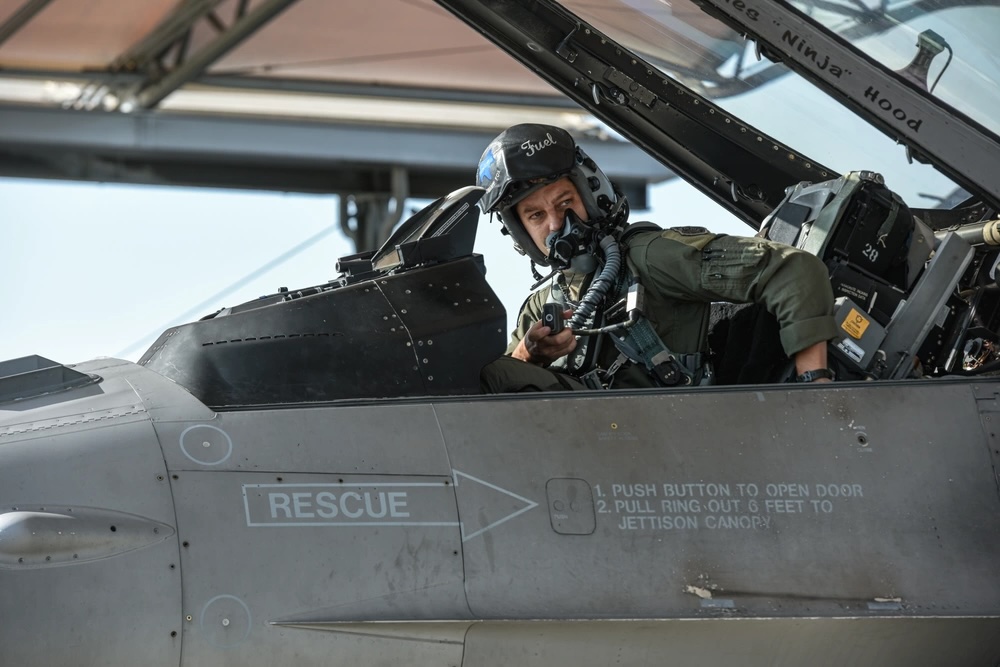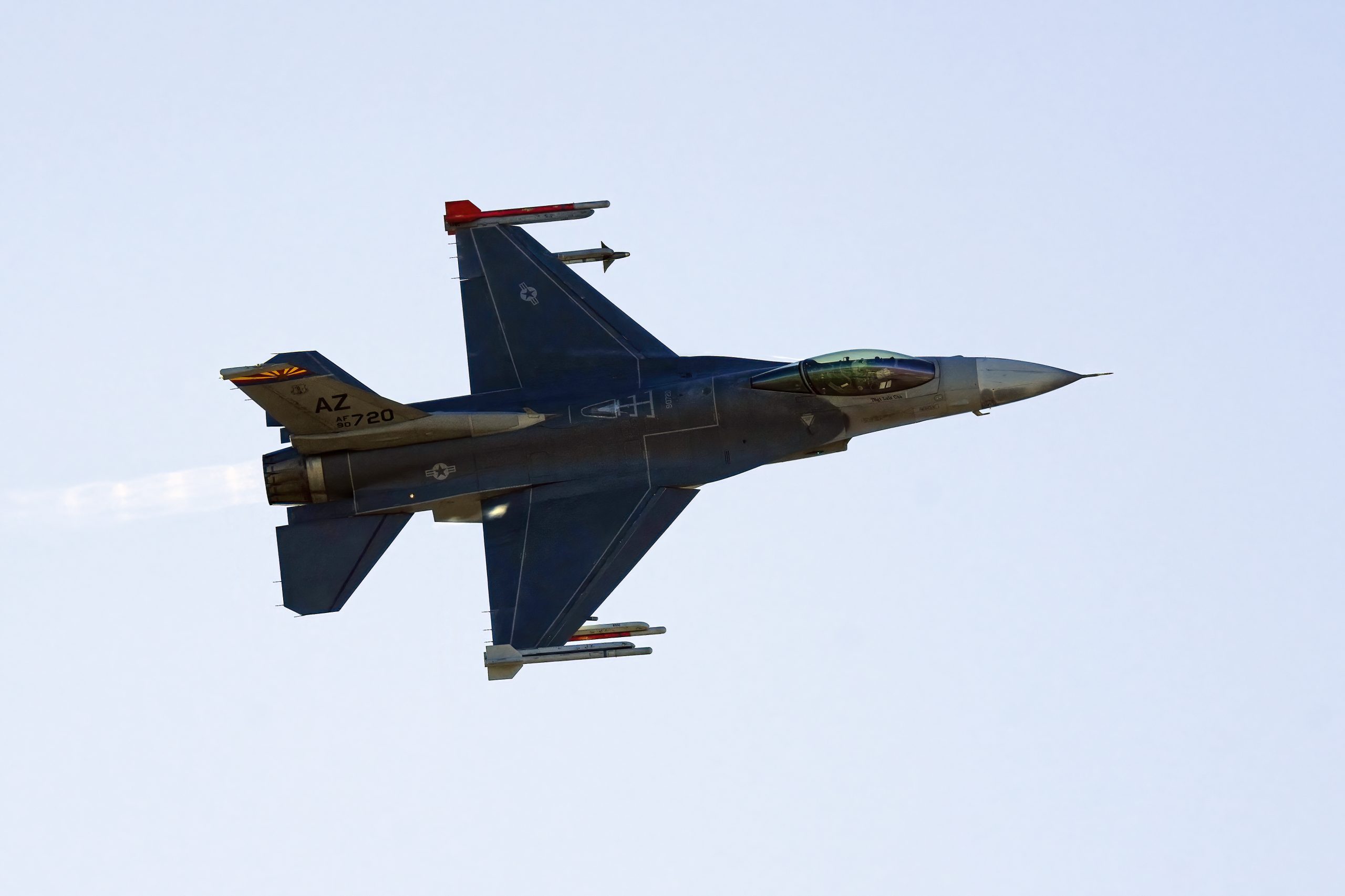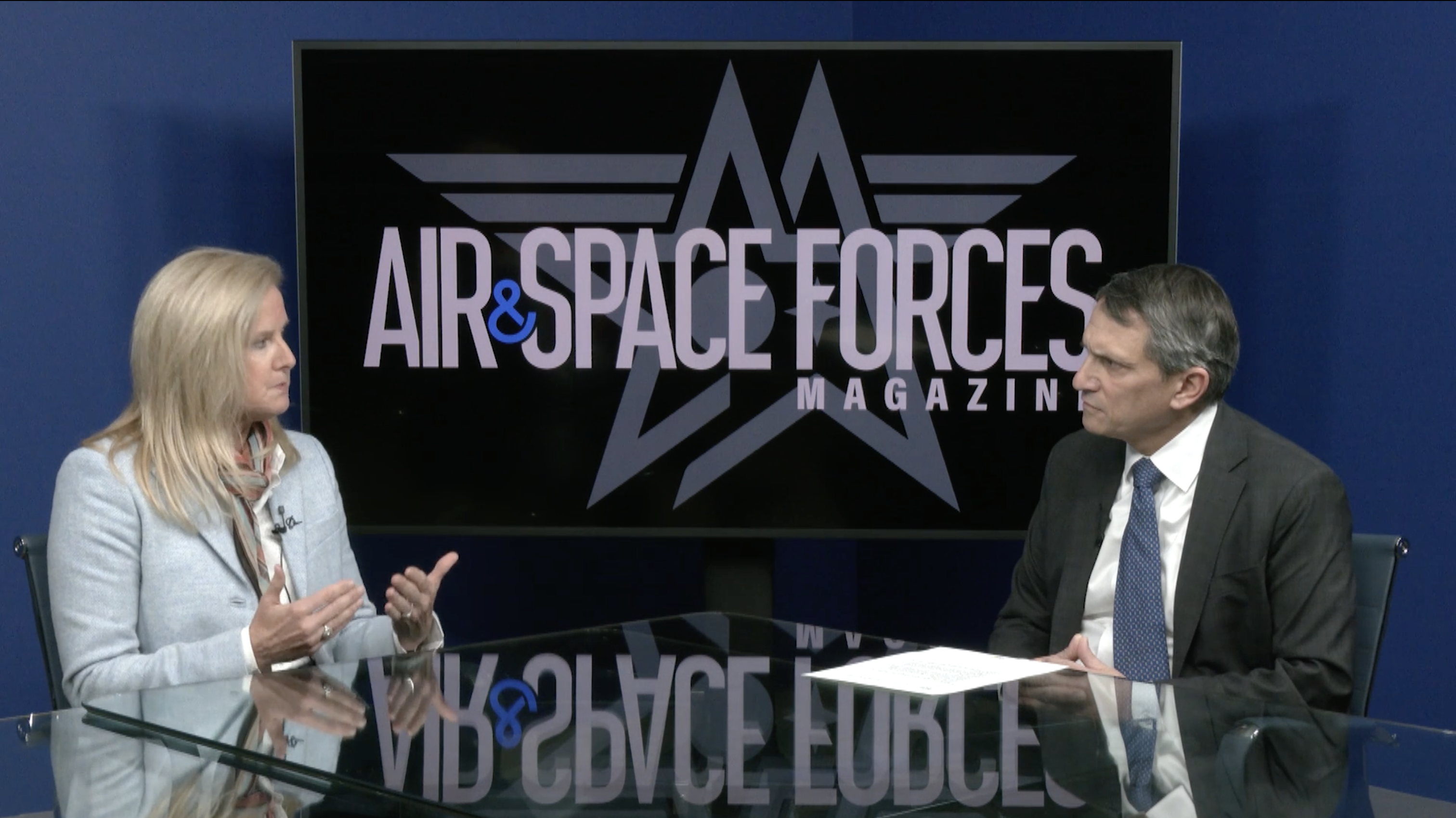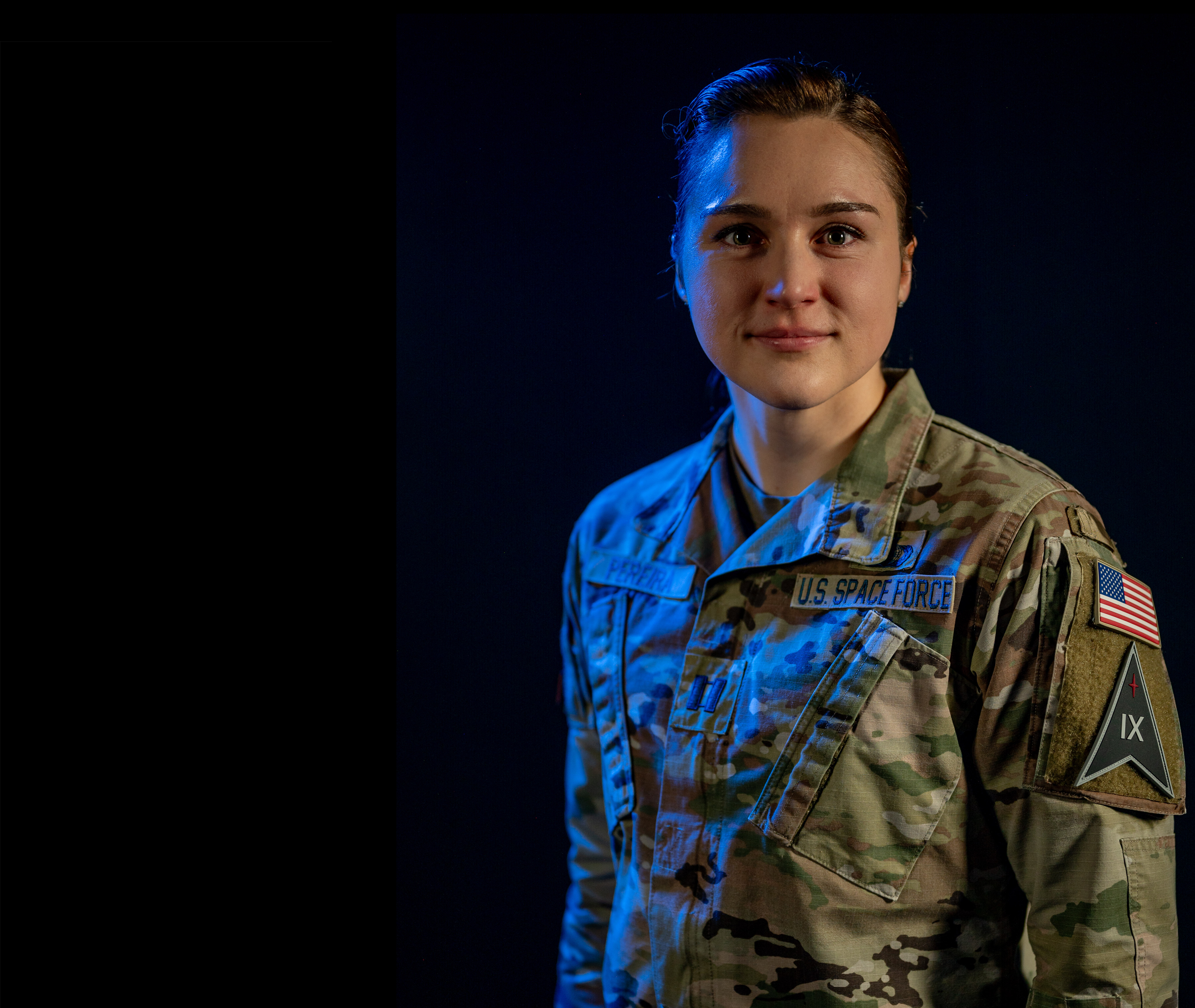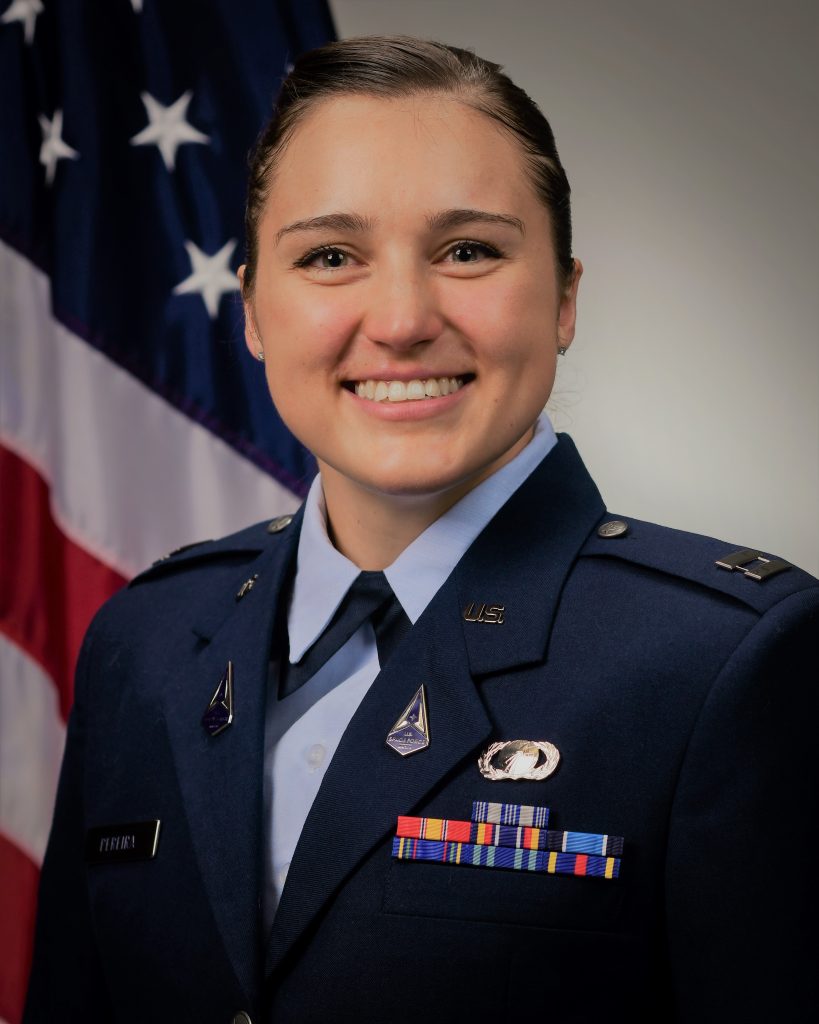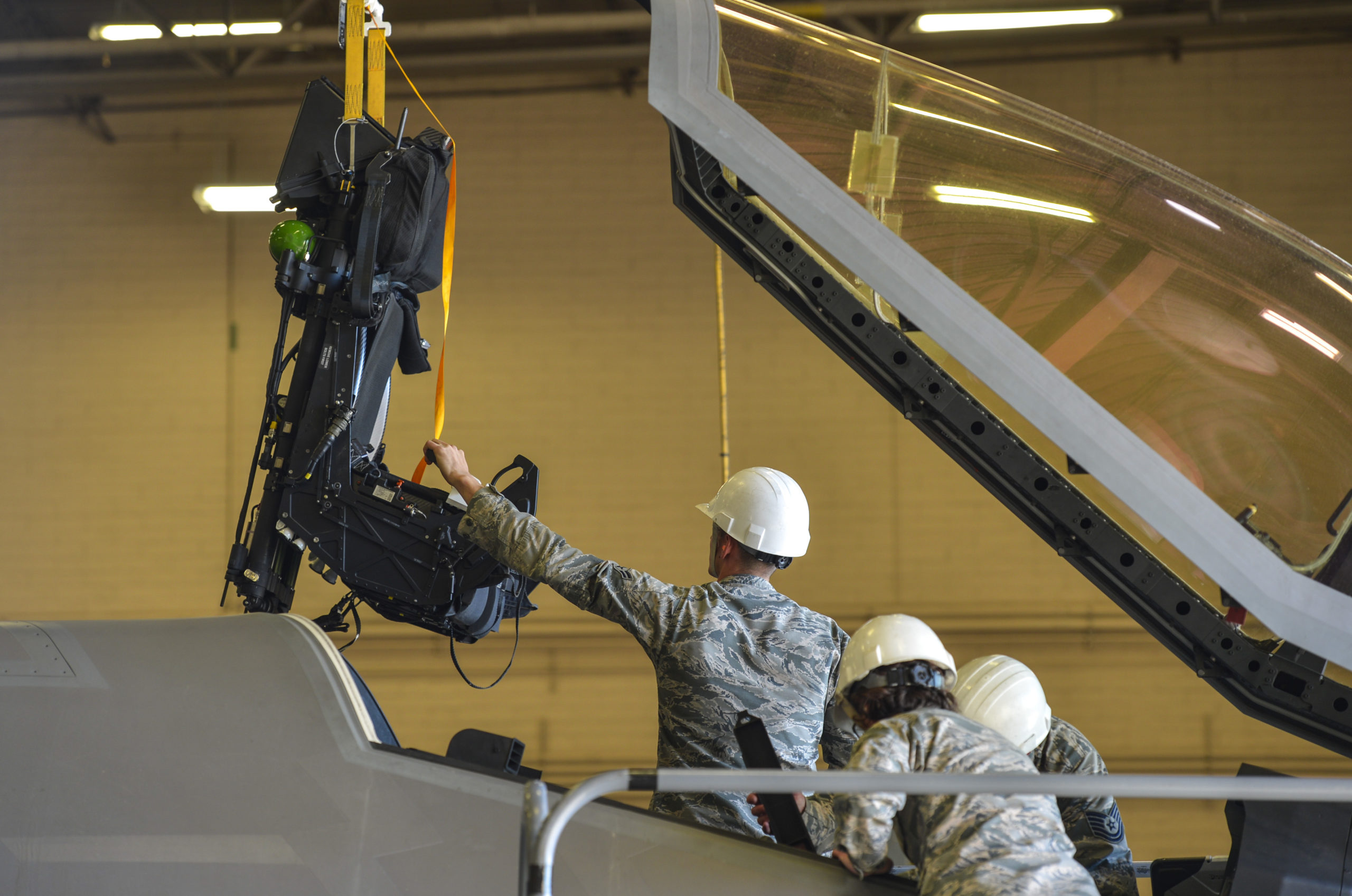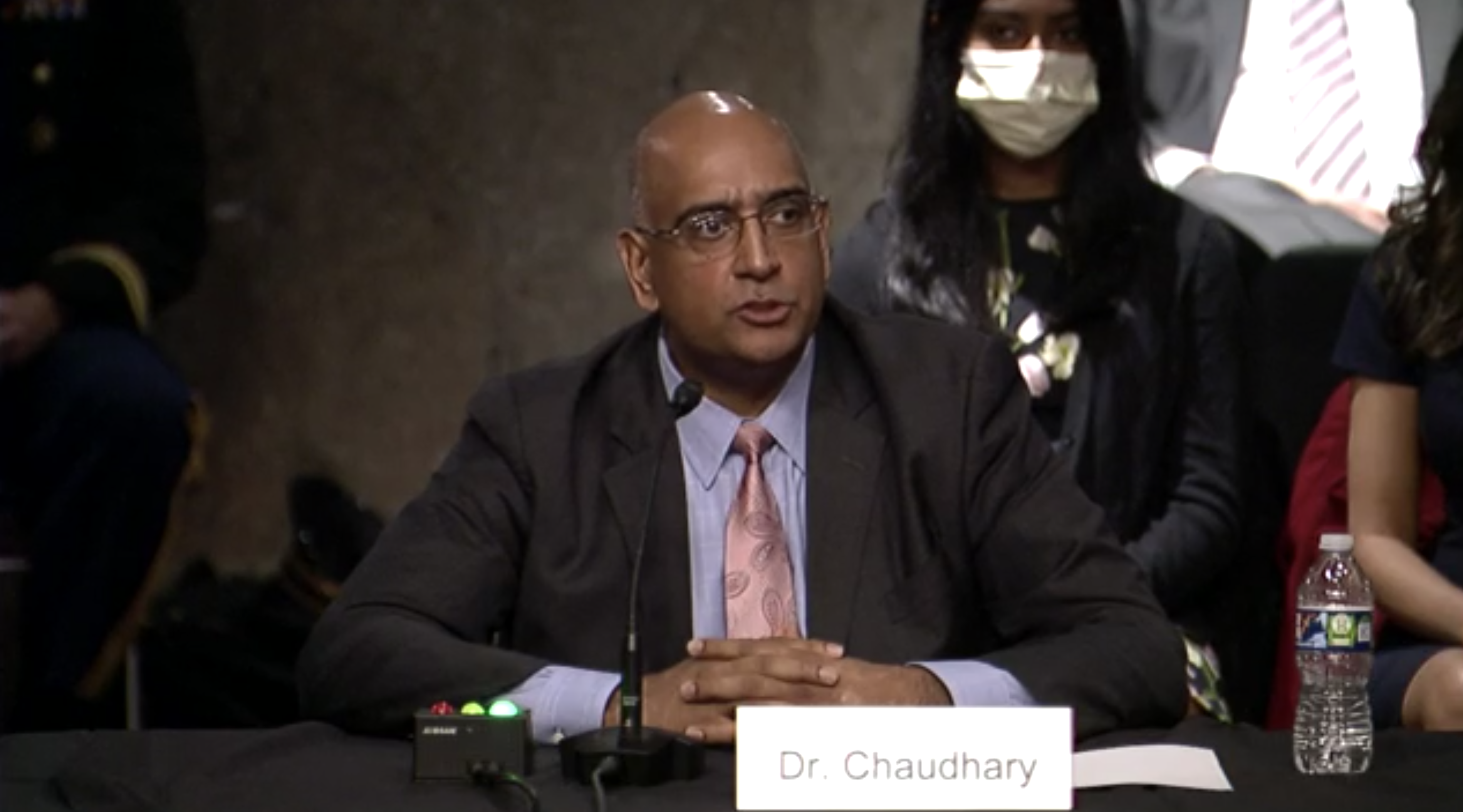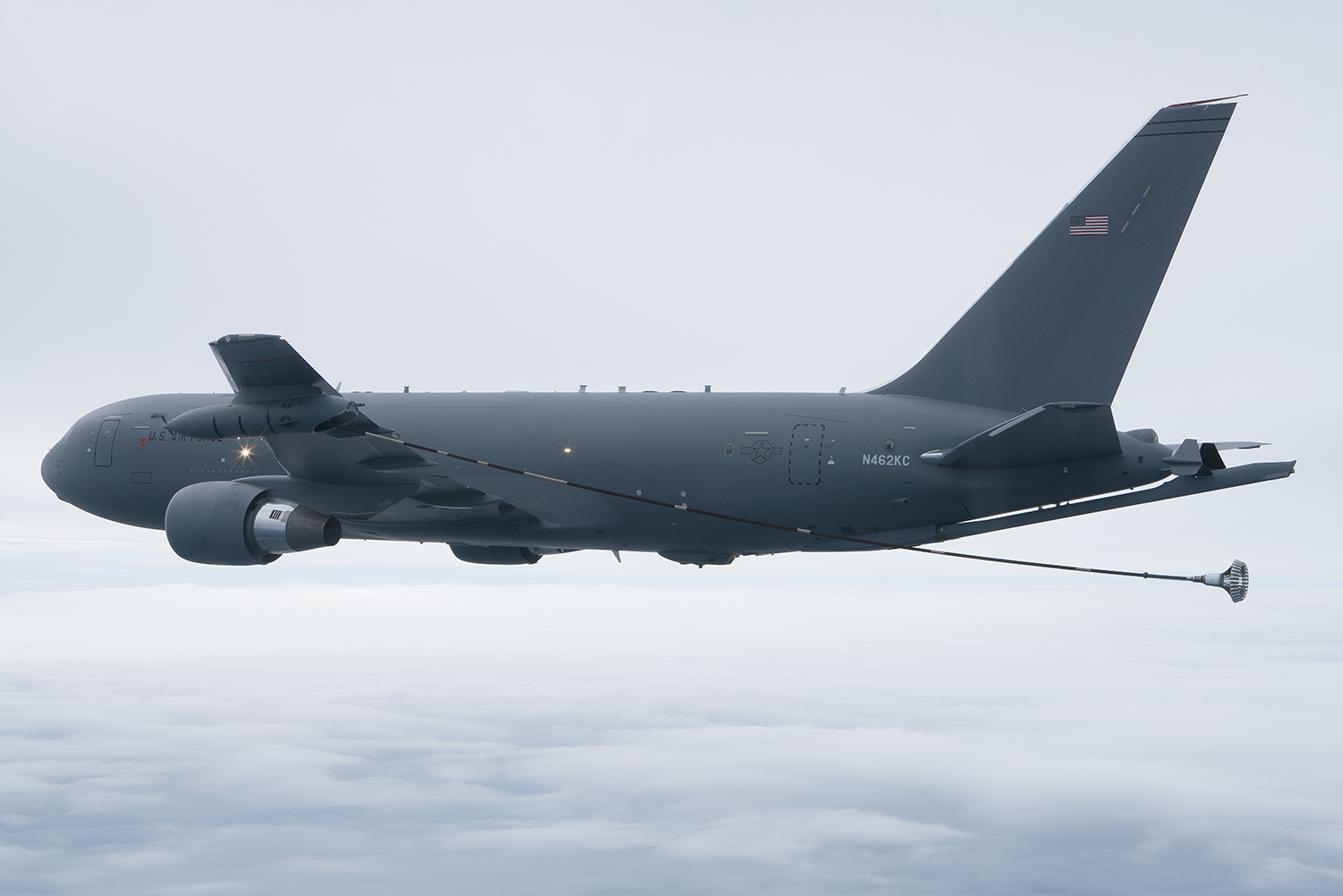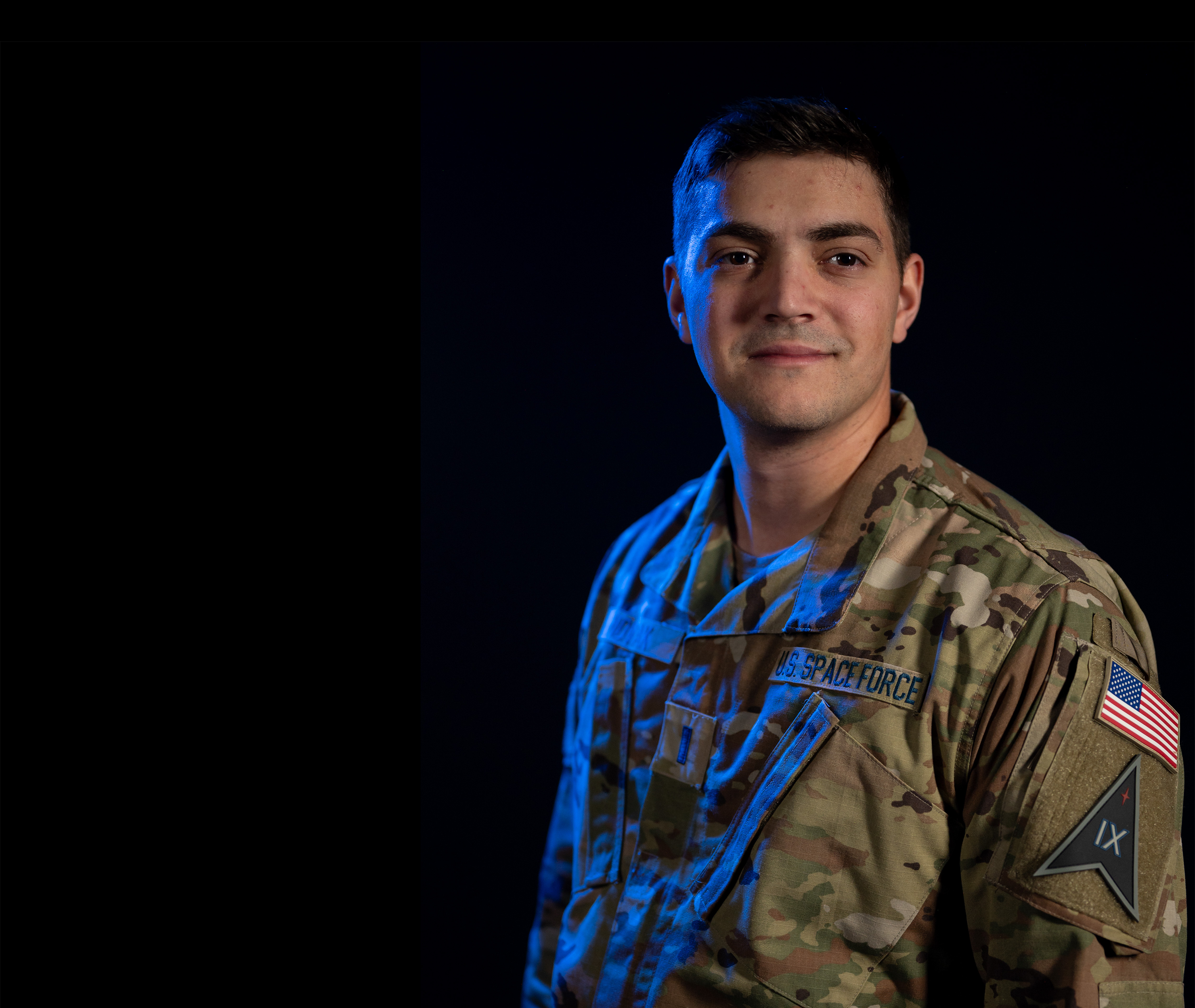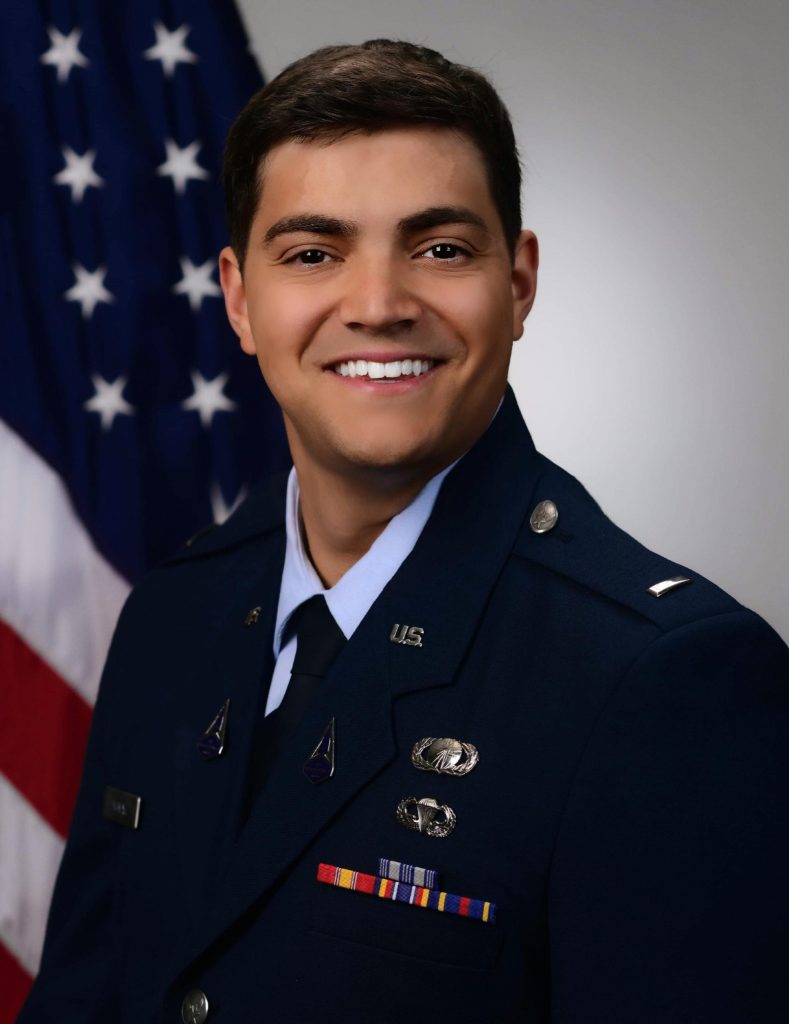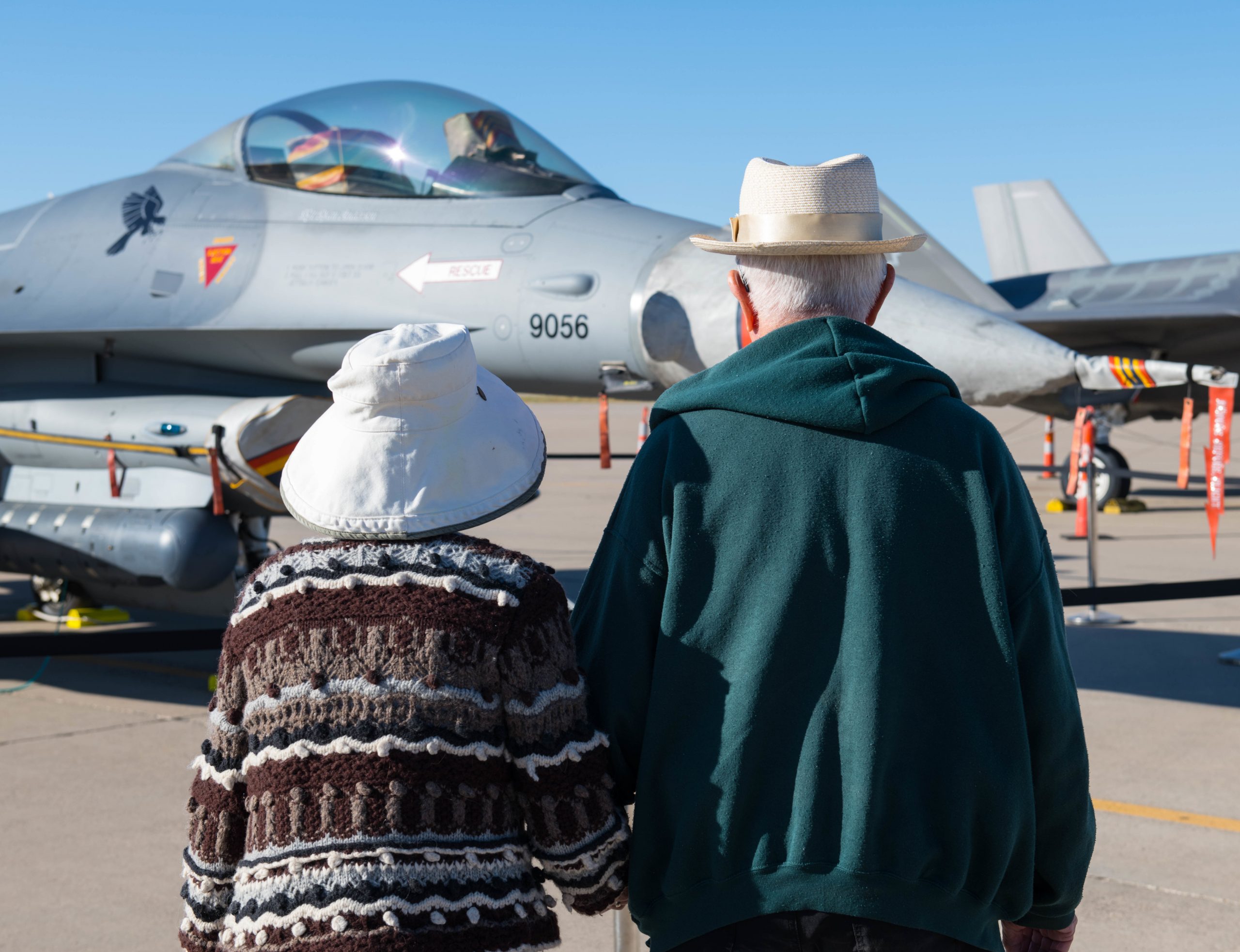An F-16 fighter pilot was recognized on Feb. 7 for saving his aircraft from a near-disastrous mishap two years ago. While taking off from Aviano Air Base, Italy on March 2, 2022, Maj. Brady Augustin felt his F-16 settle to the left on the runway. Too fast to abort, Augustin took off and rose to 10,000 feet so he could better assess the situation.
After contacting ground support, Augustin believed he had a blown tire, and he prepared to land using the runway’s arresting system. The arresting system is a cable that an aircraft can catch with its tailhook in an emergency, similar to the way Navy and Marine Corps aircraft land on aircraft carriers.
But as the pilot prepared for landing, an airfield management team made a startling discovery: a left main landing wheel still on the runway. Augustin was told to fly a low pass so the control tower could check out his landing gear. Turns out, he didn’t just have a flat—he was actually missing the tire entirely.
Without much gas left in the tank, Augustin had two options: eject or land the Viper on its belly. Belly-landings are a risky procedure, but Augustin is no stranger to stressful situations. In 2020, he received the prestigious Lt. Gen. Claire Lee Chennault Award for his work spinning up Aviano F-16s and Airmen for a no-notice deployment to the Middle East in just nine days, a process that normally takes months.
Now Augustin had to nail a life-or-death task and do his best to preserve an expensive aircraft. Murphy’s Law, the principle that anything that can go wrong will go wrong, had already struck a few times that day, but Augustin managed to put the jet down safely and with remarkable style.
A video of the landing appeared on the popular, unofficial Facebook page Air Force amn/nco/snco, where the videographer and several commenters praised Augustin’s smooth touchdown. Even more impressive, the pilot managed the landing with a combat load, including a bulky electronic countermeasures pod and other equipment hanging from the jet’s wings and belly.
“I’ve seen plenty of video of gear-up landings and this one was executed very well,” Gregg Montijo, a former A-10 Warthog pilot, told Task & Purpose at the time.
Nearly two years later, Augustin was given the Koren Kolligian Jr. Trophy by Air Force Chief of Staff Gen. David Allvin in a ceremony at the Pentagon on Feb. 7. The namesake of the award was an Air Force first lieutenant who went missing off the coast of California on Sept. 14, 1955, along with the T-33 training jet he was flying at the time. The annual trophy is the only individual flight safety award personally presented by the Air Force chief of staff.
“Maj. Augustin showed incredible skill and ingenuity in a difficult and dangerous situation,” Allvin said at the ceremony, according to a press release. “He was calm, cool, and collected—exactly what we have come to expect from our aviators and all the Airmen who have earned the prestigious Kolligian Trophy.”
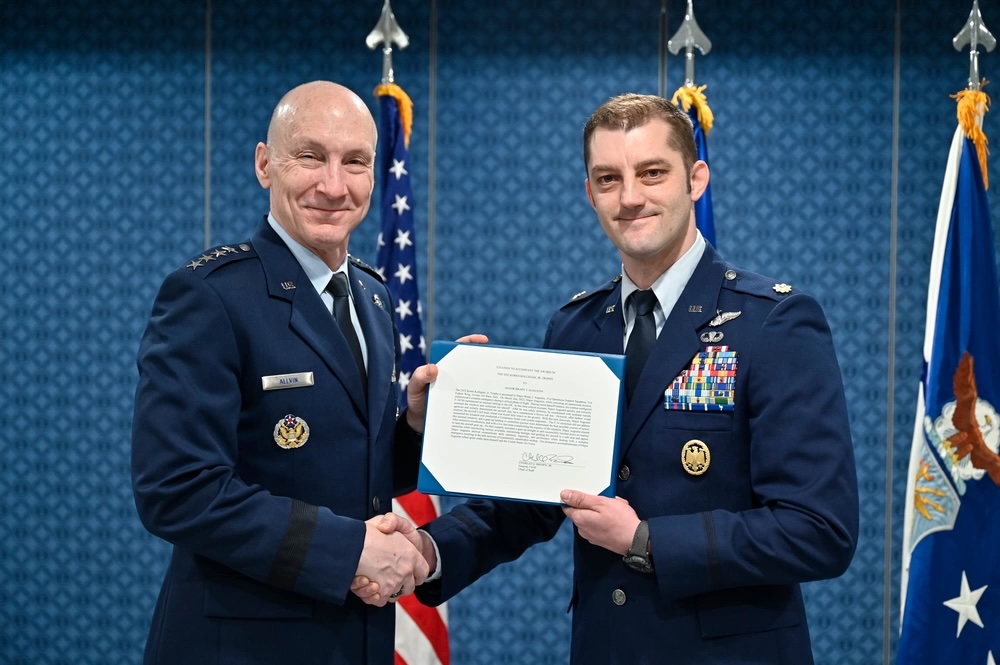
Kyle Anderson, a member of the Kolligan family, echoed Allvin’s opinion.
“What may have seemed like any other day in your [Augustin’s] life, we view as an act of heroism resulting from the Air Force’s commitment to education, training and safety—and your skill, composure, and resilience under pressure,” he said.
For his part, Augustin seemed just as grateful for the training.
“It was an incredibly unusual circumstance that had a lot of different ways that it could have gone poorly quickly,” he said. “But due to the exceptional actions by the team at Aviano Air Base in Italy, we were able to salvage [it into] a somewhat normal crash landing and save an airplane, and we all made it home that night.”
